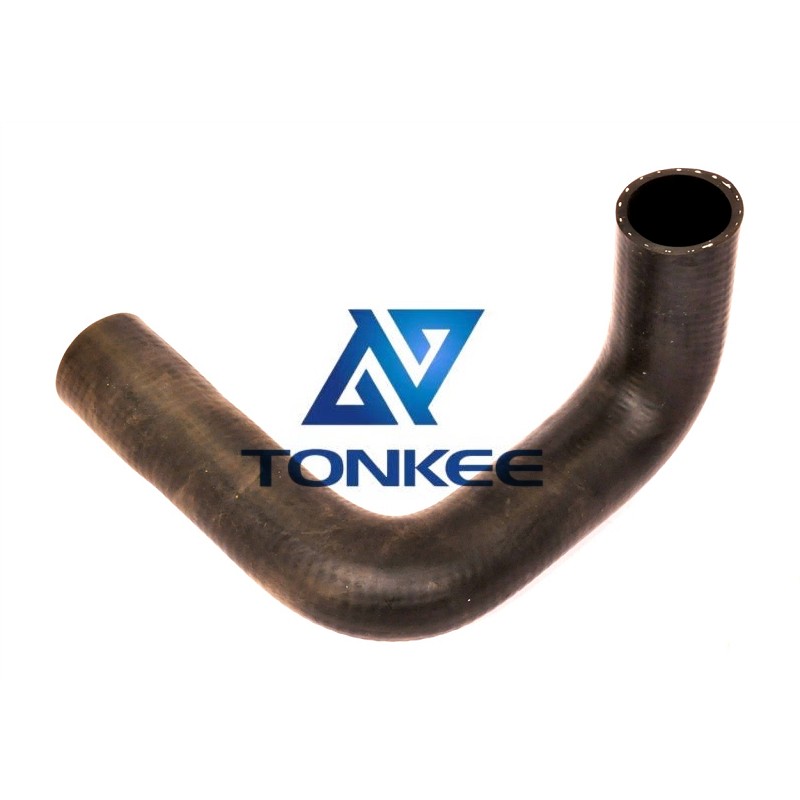
Material and Construction: The top radiator water hose pipe for the Hitachi FH130 is typically constructed from high-quality materials to withstand the extreme conditions of construction and excavation work.
It is commonly made from reinforced rubber or silicone to provide both flexibility and durability. The reinforcement ensures that the hose can handle the pressure and temperature variations encountered in the cooling system.
Compatibility: This specific water hose pipe is designed and engineered to fit the Hitachi FH130 hydraulic excavator model. It is essential to use the correct hose to ensure a proper fit, prevent leaks, and maintain efficient coolant circulation.
Function: The primary function of the top radiator water hose pipe is to transport coolant, a mixture of water and antifreeze, between the radiator and the engine. As the engine operates, it generates a significant amount of heat. The cooling system, consisting of the radiator and associated components, dissipates this heat to prevent the engine from overheating. The water hose pipe is responsible for carrying the heated coolant away from the engine to the radiator, where it releases the heat and is then recirculated to keep the engine at an optimal operating temperature.
Heat Resistance: Given its proximity to the engine, the top radiator water hose pipe must have excellent heat resistance properties. It should be capable of withstanding high temperatures without deteriorating or developing cracks. This is crucial for the longevity and reliability of the cooling system.
Pressure Rating: The water hose pipe is subjected to varying levels of pressure as the coolant circulates through the system.
It must have a sufficient pressure rating to handle these fluctuations without rupturing or leaking. The hose is typically reinforced with layers of fabric or mesh to provide the necessary strength.
Flexibility: Flexibility is another essential characteristic of the water hose pipe. It must be flexible enough to accommodate engine movements and vibrations without kinking or collapsing. A flexible hose ensures consistent coolant flow even when the engine is in motion.
Resistance to Coolant Additives: The coolant used in the cooling system often contains additives to prevent corrosion, scale buildup, and freezing. The water hose pipe should be resistant to these additives to maintain its integrity over time.
Durability and Longevity: Given its critical role in engine cooling, the top radiator water hose pipe should have a long service life. It should resist wear and tear from exposure to heat, chemicals, and mechanical stresses.
Installation: Proper installation is vital to ensure the hose functions as intended. It should be securely connected to both the radiator and the engine without any kinks or twists that could impede coolant flow. Additionally, hose clamps or fittings should be used to create a tight seal.
Maintenance: Regular inspection and maintenance of the cooling system, including the water hose pipe, are essential to prevent issues like leaks or coolant loss. Replacement of the hose may be necessary if it shows signs of wear or damage.


